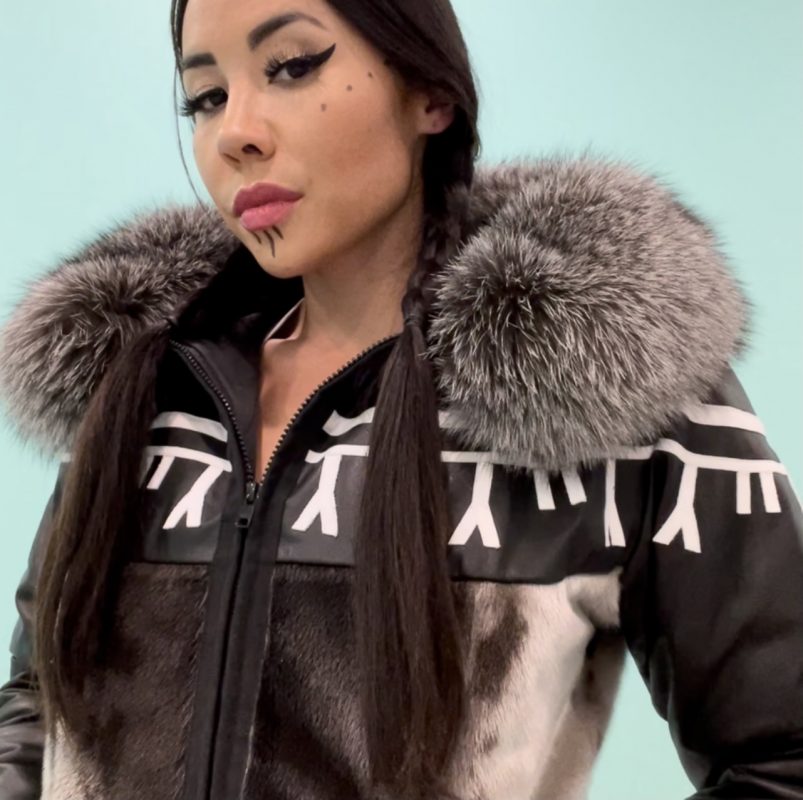News, Uncategorized @in
Understanding Cultural Appropriation
When it comes to supporting Indigenous cultures and fashion, it’s important to understand the difference between cultural appreciation and cultural appropriation. So, where is the line?
Slowly but surely, we have been seeing more Indigenous representation in the media—from TV shows like Reservation Dogs, Trickster and Rutherford Hills to seeing more Indigenous icons like social media influencer Shina Nova and model Quannah Chasinghorse, who has graced the pages of Vogue Magazine. And although there is still a long way to go, it’s about time we start seeing and celebrating these cultures. However, with that, comes a lot of people going about it all the wrong way—whether it’s people at music festivals donning feather headdresses or fast fashion companies copying traditional designs and pairing it on white models. The terms cultural appropriation and cultural appreciation come up a lot, but not everyone understands the real difference between the two.
Voir cette publication sur Instagram
Voir cette publication sur Instagram
“There are people out there who genuinely care about what lines they don’t want to cross, but are unsure,” says designer April Pigalak.
So with her help, let’s delve into the difference between the two and why it’s important not to cross that line.
What is Cultural Appropriation?
One way to explain cultural appropriation is when people wear or do something that is culturally significant to someone else, without understanding why. For one person, it may just look like a cute hairstyle or outfit, but to another it has a much deeper meaning. Pigalak gives several examples of what cultural appropriation looks like.
“It’s when people are being taught how to make kamiks or seal skin mitts or an amauti and taking that knowledge they were gifted and then using it to profit off of,” she says, adding that she sees it a lot in fast fashion. “When you have bigger companies, who look to use patterns or styles or something that might have come from Inuit or other Indigenous groups, they can afford to produce things with wholesale costs they get to benefit from.”
So when people buy these designs from a large company that has no connection to what they are selling, it often means taking away profits form Indigenous designers. Individual designers or small companies don’t have the privilege of wholesale prices and they must pay for everything out of pocket. If larger companies take over that market, they’re essentially taking away income from someone who may be trying to get back to their roots through their craft.
Plus, those large companies or non-Indigenous people who make a profit from these skills don’t usually understand the significance of it.
“It’s all very precious to us,” says Pigalak. “There’s so much more meaning to what we were taught other than just making something. There’s always so many skills and such wisdom that were taught to us.”
Colonialism has spent centuries trying to rip away Indigenous people’s culture, so it hits even harder when non-Indigenous people profit off those same traditions.
The Difference Between Cultural Appreciation and Appropriation
That being said, it is okay to wear Indigenous designs as a non-Indigenous person, but there’s a stark difference between appropriation and appreciation. Mainly, it comes down to understanding where each piece comes from. Rather than buying knock-off moccasins, opt to purchase work from local Indigenous people, as it will allow that culture and traditions to thrive. Plenty of designers combine modernity with traditional materials and styles, so you can don the latest fashions while supporting locals.
So, go ahead and buy that individual designer’s pair of beaded earrings or that seal skin purse.
But do stay away from things like feather head dresses and traditional Inuit tattoos if it’s not a part of your heritage.
How You Can Avoid Cultural Appropriation
Pigalak notes that non-Indigenous people are more than welcome to learn traditional skills, like beading and sewing kamiks. It’s a chance to learn about another’s culture, but it’s a very different thing to wear it yourself than it is to learn the skill just to sell your work.
“When making that for themselves, you definitely feel like it’s something special to them as well and they’re appreciating that culture. They can enjoy what they learned and have it live on within them too.”
If you’re ever in a store and don’t know if something is authentic or not, Pigalak gives a simple piece of advice: when in doubt, ask.
“Your safest bet would be to ask whoever is selling the item if it’s Indigenous-made.”
One of the most important lessons if you want to expand your understanding and appreciation for another culture is to learn about it. Watch and read more books, movies and TV shows by BIPOC writers. Take an Indigenous history course or do some research online. Because the better you understand others, the better an ally you can become.
More on April Pigalak
April Pigalak has recently returned to Kugluktuk, where she was born and raised, from Ottawa. In Nunavut, Pigalak learned her seamstress skills from her adoptive family.
“I was always taught to sew and my mother who raised me—she always made different things,” Pigalak explains. “She tried to make modern stuff from traditional items as well.”
Pigalak took on those skills herself and tried to find her own ways of adding a modern flare. Her work has only improved as she got older and now, one can easily find her designs online under the label Upinngaaq Designs. There, you’ll find tufted seal skin and leather jewelry, seal skin purses and clutches along with parkas and ponchos with fur lined hoods.
Voir cette publication sur Instagram
Bibliography
https://www.thoughtco.com/cultural-appropriation-and-why-iits-wrong-2834561


 English
English Français
Français 简体中文
简体中文